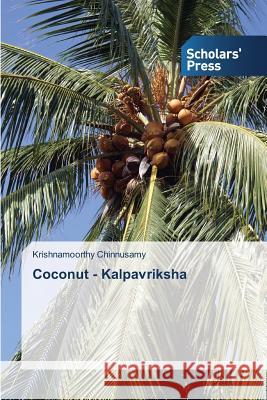Coconut - Kalpavriksha » książka
Coconut - Kalpavriksha
ISBN-13: 9783639712438 / Angielski / Miękka / 2014 / 88 str.
The coconut palm (Cocos nucifera linn.) is the most useful palm in the world. Every part of the tree is useful to human life for some purpose or the other. Hence, the coconut palm is endearingly called kalpavriksha meaning the tree of heaven. It provides food, drink, fuel and timber. Millions of families in India depend on coconut for their Livelihood either directly or indirectly. India ranks third in area and production of coconut in the world. The copra obtained by drying the kernel of coconut is the richest source of vegetable oil containing 65 to 70 per cent oil. Coconuts are generally classified into two general types: tall and dwarf. On very fertile land, a tall coconut palm tree can yield up to 75 - 100 fruits per year, but more often yields less than 30, mainly due to poor cultural practices. Traditional areas of coconut cultivation in India are the states of Kerala, Tamil Nadu, Puducherry, Andhra Pradesh, Karnataka, Goa, Maharashtra, Orissa, West Bengal and islands of Lakshadweep and Andaman and Nicobar. Four southern states combined account for almost 92% of the total production in the country: Kerala (45.22%), Tamil Nadu (26.56%), Karnataka (10.85%) and Andhra (9 %).











